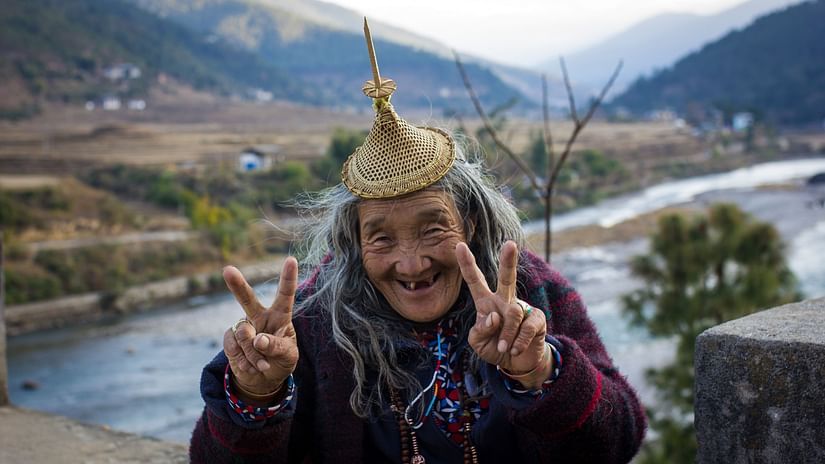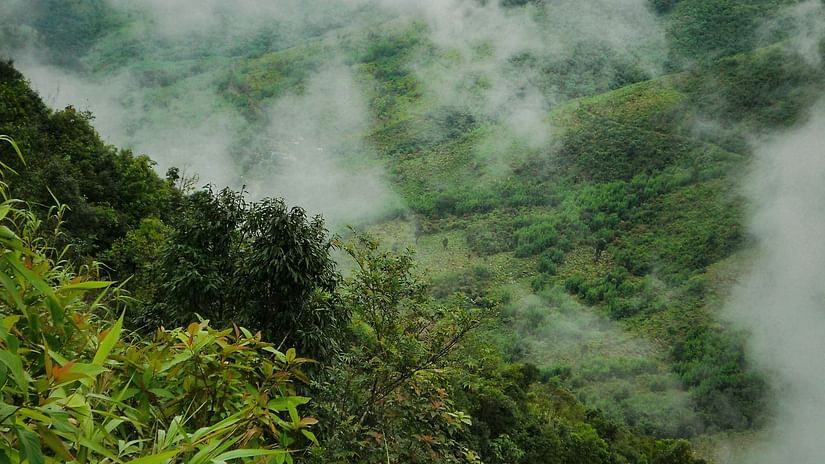- Why a Floating Hotel Is the Best Place to Celebrate New Year in Kolkata
- Best Wedding Venues in Shillong for Your Dream 2025 Celebration
- Celebrate Durga Puja on Water: Experience the Festival Like Never Before at Polo Floatel Kolkata
- Polo Orchid Cherrapunji - Cliffside Luxury with Views of Seven Sisters Falls
- Polo Floatel Kolkata - The Finest Floating Hotel on the Ganges with Iconic Howrah Bridge Views
- Five-Star Living at Hotel Polo Towers - Agartala’s Premier Hotel Destination
- Tring Tring: Ringing in Fun and Flavour in Shillong!
- Arwah Cave, Cherrapunjee, Meghalaya
- Delhi to Agartala
- Poush Sankranti Festival
- Bishop Falls Shillong
- Cathedral of Mary Help of Christians Laitumkhrah Shillong Meghalaya
- Trip to Kolkata
- Sepahijala Wildlife Sanctuary & Zoo
- Bangladesh to Agartala
- Lady Hydari Park Shillong Meghalaya
- Rainbow Falls Cherrapunjee
- Babu Ghat
- Durga Puja in Agartala
- Don Bosco Museum Shillong
- Best Time for Shillong Tour
- Meghalaya Itinerary For 4 Days
- Demseiniong Falls
- Unexplored Places in Tripura
- Best Time to Visit Tripura
- Sweet Falls Shillong
- Nehu Waterfall
- Offbeat Places in Kolkata
- Adventure Sports in Shillong
- Spread Eagle Falls
- Lyngksiar Waterfall
- Blue Lagoon Meghalaya
- Weekend Getaway in Kolkata
- Handicrafts of Tripura
- Agartala Museum
- Sightseeing in Agartala
- Kharchi Puja Agartala
- Sightseeing In Shillong
- Tourist Places in Shillong
- Sightseeing In Cherrapunjee
- Places to visit in Cherrapunjee
- Cherrapunji Rainfall
- Discover Cherrapunji's History at Polo Orchid Resort
- Cherrapunjee Rainfall
- History of Cherrapunjee
- Ujjayanta Palace Agartala
- Best time to visit the Seven Sisters of India
- Festivals of Kolkata
- Unexplored Places in Shillong
- Shillong Tourist Places
- Tourist Places in North East India
- Folk Dances of North East India
- Trekking in Cherrapunjee
- Tourist Places in Cherrapunjee
- Shillong in Summer
- Temples in Shillong
- FESTIVALS IN TRIPURA
- JAGGANATH BARI AGARTALA
- Offbeat Places in Meghalaya
- Unique Sweets - Shillong
- Shillong View Point
- Parks in Agartala
- 7 Beautiful Villages in India
- Bamboo Trekking in Meghalaya
- Kynrem Falls
- Best Places to Eat in Shillong
- Best Cafe in Shillong
- Unexplored Places in Meghalaya
- Historical places in Kolkata
- Famous Sweet Shops in Kolkata
- Shillong in April - Spring in Shillong
- Best Places in Shillong for Couples
- Cherrapunjee Eco Park
- Khasi Monoliths Meghalaya
- Famous Food of Tripura
- Dainthlen Falls Cherrapunjee
- New Year Celebrations in Kolkata
- Seven Sisters of India
- Best Food in Shillong
- Durga Puja in Kolkata, 2023
- Mesmerising Shillong Autumn Festival
- Enchanting Shillong in Winter
- Experience Kolkata in Winter Months
- Exploring Kolkata's Rich Heritage
- Indulge in the Dover Lane Music Festival
- Pre-wedding Shoot Locations in Kolkata
- A Road Trip From Guwahati
- The Iconic History of Howrah Bridge
- Wedding Extravaganza at Floatel Kolkata
- Lady Hydari Park in Shillong
- The Wild Fruits of Meghalaya
- Thangkharang Park and Ka Khoh Ramhah, Cherrapunjee
- Mawkdok Dympep Valley - A Gem in Meghalaya’s Tourism Circle
- The Cleanest Village in Asia - Mawlynnong
- Mawsynram Village - The Wettest Place on Earth
- Don Bosco Museum - A Glimpse Into Indigenous Lifestyle
- A Visit to Cathedral of Mary Help of Christians
- A Visit To Udaipur, Tripura
- Tripura: History, Culture & Heritage
- The Unique Modes of Transport in Kolkata
- Laitlum Canyons
- Nohkalikai: India's Highest Plunge Waterfall
- Agartala gets it’s first 5-Star Hotel
- Sohra - The Land of Oranges
- Mawryngkhang Trekking Destination at Wahken
- Best Destination Wedding Resorts in India
- Safest Places in India for Solo Female Travellers
- Open-air dining at Sky Grill
- A weekend getaway: 2 day itinerary for Cherrapunjee
- Reasons to Celebrate Weddings at Cherrapunjee
- Raise a toast at The Grand Bar
- A Cliffside Dining Experience At Sohra House, Cherrapunjee
- The Sweetness of Pineapples in Agartala
- Seize the time at Polo Floatel, Calcutta
- Don't lose out on luxurious experiences!
- Ultimate Tour Guide Through Meghalaya
- Rejuvenate at Woodstock Resort
- Your 2-Day Itinerary to a Weekend at Polo Agartala!
- Timeless Romantic Experiences at Floatel!
- Experience Food Heaven At Our Cafés
- Multi-cuisine feasts delivered to your door from Polo
- The Newest Cloud Kitchen In Kolkata:Room Service By Polo Floatel
- Celebrate your wedding amidst nature at Polo Resort
- Exquisite Dishes from Khasi Cuisine
- Places to Visit in Agartala
- Cocktail Pre-Mixers by Polo Floatel
- Celebrate your wedding at Agartala’s first five-star destination
- Polo Resort – Ready to welcome you again!
- A Road Trip Across Northeast India
- Exploring the Greens of Agartala
- Unakoti: Tripura Heritage Site
- Waterfalls in Cherrapunjee Sohra Waterfalls
- Best Time to Visit Cherrapunjee
- Living Root Bridges in Cherrapunjee
- Journey through the Abode of Clouds, Meghalaya
- Cuisines of Shillong
- Cherry Blossom Festival in Shillong
- Woodstock Music Festival
- Winter activities in Cherrapunjee
- Meghalaya Travel Itinerary
- Christmas in Meghalaya
- Historical Places in Kolkata
- Kolkata Cuisine - Best Traditional Dishes
- Things to do in Agartala
- Tips & tricks for first time hikers in Cherrapunjee
- Redefining amenities luxuriously!
- A cocktail of experiences awaits you at Sky Deck - Constellation
- Ride the tide of nostalgia, love, scenic beauty & more
- Explore the Magical Caves in Cherrapunjee
- The Sacred Groves in Meghalaya
- Flora and Fauna of Meghalaya
- Unboxing the Northeast
- Celebrity Visit in Hotel Polo Towers Agartala
- Tranquil Vibes at Polo Resort Spa
- Shopping at Police Bazaar in Shillong
- A Peek Into the Khasi Culture
- Exploring Meghalaya’s Wildlife
- Things To Do in Kolkata
- Planning A Road Trip to Agartala
- Musical Heritage of Kolkata
- Celebrating Poila Boishakh
- Breakfast with a view at Cherrapunjee
- The Amazing Nightlife of Shillong
- Top 5 Activities to do in Cherrapunjee
- Shillong Monsoons: Nature Blooming in all its Glory
- Indigenous Handicrafts of Meghalaya
- Monsoon in Meghalaya
- Wildlife Sanctuaries in Tripura
- Unique Dining Experiences in Kolkata
- Monsoon in Kolkata
- What makes Kolkata an amazing travel destination?
- What makes Cherrapunjee a destination wedding hotspot?
- The Rock Capital of India
- Laitkor Peak in Shillong
- A Trip to the Majestic Elephant Falls
- The Picturesque Laitlum Canyon in Shillong
- The Unique Culture & Heritage of Tripura
- The Vibrant Festivals in Meghalaya
- A Trip to Krem Mawmluh Cave, Cherrapunjee
- Best Time to Visit Shillong
- A Trip to Ward’s Lake, Shillong
- A Taste of Indigenous Life at Shillong
- Exploring the Art Culture of Kolkata
- The Famous Museums in Kolkata
- An occasion of a lifetime at Polo Resort!
- The Regality of Agartala’s First 5-Star Hotel
- Bed, Breakfast and the Perfect Staycation at Woodstock Resort
- A Trip to the Historical Places in Meghalaya
- Mawsmai Nongthymmai Eco Park
- A Refreshing Trip to Dawki
- A Fun Trip to Umiam Lake
- Shillong Golf Course - The Glen Eagle of the East
- The Annual Kolkata International Book Fair
- Shop Like a Pro at Kolkata's Local Markets
- Visit the Popular Durga Puja Pandals in Kolkata, 2021
- Street Food in Kolkata: A Culture Trip
- Experience Shreya Ghoshal’s Mesmerizing Concert in Kolkata
- Stay at Polo Floatel for Alan Walker’s Concert in Kolkata
- Polo Floatel: The Perfect Stay for Bryan Adams Concert Attendees
The close-knit Khasi community is the largest ethnic group found in Eastern Meghalaya, some parts of Bangladesh and certain sections of Assam. They have a unique lifestyle and their societal norms are different from most communities. Even though they have existed for centuries, some might say they have progressed further than the most developed countries.
A Matrilineal Society
In a world where patriarchy prevails, it is rather rare to find a community that is built around women and matriarchy. For the Khasi tribe of Meghalaya, however, this concept is far from being alien. The natives have established a matrilineal tradition that puts women in a pivotal position in aspects such as inheritance of wealth and taking family names after marriage. The youngest daughter in the family inherits the family treasure, children take their maternal surname while a man must live at his mother-in-law’s home after marriage. These are just some of the societal norms in Khasi tribe culture that is a rich tapestry of an egalitarian and matrilineal framework.

The tribe is said to have once been a patriarchal society. However, as more men lost their lives to wars and battles, leaving behind their widows who were forced to marry and the children who were labelled illegitimate after their mothers remarried, the people decided to not tolerate such discriminations. Hence, they decided that children should take up their mother’s last name.

The Origins of Khasi Tribe Culture
While talking about Meghalaya, one cannot forget the contributions of this tribe to the state’s history. Khasi tribe makes for a significant portion of Meghalaya’s population and are speculated to have existed in the state from 56,000 years ago. Scholars have unanimously traced their origins to almost 60,000 years ago when they separated from the main branch of the Austro Asiatic people. Since then, Khasi natives have grown in number and now occupy the Eastern part of Meghalaya that shares a border with Assam and some parts of Bangladesh as well.
Traditional Dresses
The Khasi tribe wear their traditional dresses with pride and most often wear them during special occasions like weddings and festivals. The male attire is known as Jymphong. It is a long, sleeveless and collarless coat that is tightened on the front. The coat is often paired with a Dhoti and an ornamental waistband. The female counterpart's outfit is quite elaborate and is called Jainsem or Dhara. It comprises several layers and pieces of cloth that bind together to give the body a cylindrical shape. Both men and women love to accessorise with headgears like crowns or turbans with a spike or peak fixed to the headgear.
Annual Festivals
Khasi myths and legends revolve around nature and its relationship with forests. They celebrate Ka Shad Suk Mynsiem every April to thank Mother Nature for a good harvest season as well as pray for another fruitful season before the fresh sowing of seeds. The locals gather together to witness a ritualistic dance performed by the unmarried women and the men of the community. Khasi observes another harvest festival, Ka Pom-Blang Nongkrem, in the month of either October or November. The community comes together to pray for the prosperity and peace of its sect.
Come Face to Face with Khasi Culture in Meghalaya
Witness the rich culture and the way of life of the Khasi tribe in Meghalaya during your trip here. Visit local markets where you will find more women than men running the stalls and selling fresh produce. The local museums are also a great source of information. Stay at Polo Cherrapunjee Resort and explore the neighbouring villages. Our 5-star resort offers 6 broad categories of luxurious accommodations including rooms, cottages, suites and villas. We also have excellent dining facilities where you can try traditional Khasi dishes.
/VST_6222_lvdxlb)

/WhatsApp_Image_2021-12-21_at_4.55.23_PM_l7flpu)

/Wedding_4_hhbs5w)